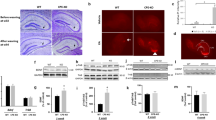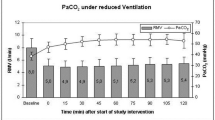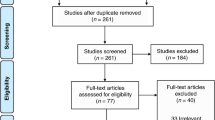Abstract
There is significant controversy over the effects of hypercapnia on the human newborn brain. Previous studies have shown that 1 h of an arterial CO2 pressure (Paco2) of 80 mm Hg alters brain cell membrane Na+K+-ATPase enzyme activity in the cerebral cortex of newborn piglets. The present study tests the hypothesis that hypercapnia (either a Paco2 of 65 or 80 mm Hg) results in decreased energy metabolism and alters neuronal nuclear enzyme activity and protein expression, specifically Ca++/calmodulin-dependent kinase (CaMK) IV activity, phosphorylation of cAMP response element binding protein (CREB), and expression of apoptotic proteins in cortical neuronal nuclei of newborn piglets. Studies were performed in 20 anesthetized normoxic piglets ventilated at either a Paco2 of 65 mm Hg, 80 mm Hg, or 40 mm Hg for 6 h. Energy metabolism was documented by ATP and phosphocreatine (PCr) levels. Results show ATP and PCr levels were significantly lower in the hypercapnic groups than the normocapnic. CaMK IV activity, phosphorylated CREB density, and Bax protein expression were all significantly higher in the hypercapnic groups than the normocapnic group. Bcl-2 protein was similar in all three groups, making the ratio of Bax/Bcl-2 significantly higher in the hypercapnic groups than in the normocapnic group. We conclude that hypercapnia alters neuronal energy metabolism, increases phosphorylation of transcription factors, and increases the expression of apoptotic proteins in the cerebral cortex of newborn piglets and therefore may be deleterious to the newborn brain.
Similar content being viewed by others
Log in or create a free account to read this content
Gain free access to this article, as well as selected content from this journal and more on nature.com
or
Abbreviations
- CaMK IV:
-
Ca++/calmodulin-dependent kinase IV
- CBF:
-
cerebral blood flow
- CREB:
-
cAMP response element binding protein
- NMDA:
-
N-methyl-d-aspartate
- PCr:
-
phosphocreatine
- pHe:
-
extracellular pH
- pHi:
-
intracellular pH
References
Woodgate PG, Davies MW 2001 Permissive hypercapnia for the prevention of morbidity and mortality in mechanically ventilated newborn infants. Cochrane Database Syst Rev CD 002061
Varughese M, Patole S, Shama A, Whitehall J 2002 Permissive hypercapnia in neonates: the case of the good, the bad, and the ugly. Pediatr Pulmonol 33: 6–64
Mariani G, Cifuentes J, Carlo WA 1999 Randomized trial of permissive hypercapnia in preterm infants. Pediatrics 104: 082–1088
Wyatt JS, Edwards AD, Cope M, Delpy DT, McCormick DC, Potter A, Reynolds EO 1991 Response of cerebral blood volume to changes in arterial carbon dioxide tension in preterm and term infants. Pediatr Res 29: 53–557
Leahy FA, Cates D, MacCallum M, Rigatto H 1980 Effect of CO2 and 100% O2 on cerebral blood flow in preterm infants. J Appl Physiol 48: 68–472
van Bel F, van de Bor M, Baan J, Ruys JH 1988 The influence of abnormal blood gases on cerebral blood flow velocity in the preterm newborn. Neuropediatrics 19: 7–32
Wallin LA, Rosenfeld CR, Laptook AR, Maravilla AM, Strand C, Campbell N, Dowling S, Lasky RE 1990 Neonatal intracranial hemorrhage: II. Risk factor analysis in an inborn population. Early Hum Dev 23: 29–137
Ment LR, Oh W, Philip AG, Ehrenkranz RA, Duncan CC, Allan W, Taylor KJ, Schneider K, Katz KH, Makuch RW 1992 Risk factors for early intraventricular hemorrhage in low birth weight infants. J Pediatr 121: 76–783
Szymonowicz W, Yu VY, Wilson FE 1984 Antecedents of periventricular haemorrhage in infants weighing 1250 g or less at birth. Arch Dis Child 59: 3–17
Levene MI, Fawer CL, Lamont RF 1982 Risk factors in the development of intraventricular haemorrhage in the preterm neonate. Arch Dis Child 57: 10–417
Skouteli HN, Kuban KC, Leviton A, Brown ER, Krishnamoorthy KS, Pagano M, Allred EN, Sullivan KF, Baglivo JA, Huff KR 1988 Arterial blood gas derangements associated with death and intracranial hemorrhage in premature babies. J Perinatol 8: 36–341
Volpe JJ 2000 Neurology of the Newborn. W.B. Saunders, Philadelphia
Ment LR, Oh W, Philip AG, Ehrenkranz RA, Duncan CC, Allan W, Taylor KJ, Schneider K, Katz KH, Makuch RW 1992 Risk factors for early intraventricular hemorrhage in low birth weight infants. J Pediatr 121: 76–783
Szymonowicz W, Yu VY, Wilson FE 1984 Antecedents of periventricular haemorrhage in infants weighing 1250 g or less at birth. Arch Dis Child 59: 3–17
Friss HE, Wavrek D, Martin WH, Wolfson MR 1994 Brain-stem auditory evoked responses to hypercarbia in preterm infants. Electroencephalogr Clin Neurophysiol 90: 31–336
Muller AM, Morales C, Briner J, Baenziger O, Duc G, Bucher HU 1997 Loss of CO2 reactivity of cerebral blood flow is associated with severe brain damage in mechanically ventilated very low birth weight infants. Eur J Paediatr Neurol 1: 157–163
Pryds O, Greisen G, Lou H, Friis-Hansen B 1990 Vasoparalysis associated with brain damage in asphyxiated term infants. J Pediatr 119–125
Zanelli SA, Numagami Y, McGowan JE, Mishra OP, Delivoria-Papadopoulos M 1999 NMDA receptor-mediated calcium influx on cerebral cortical synaptosomes of the hypoxic guinea pig fetus. Neurochem Res 24: 37–446
Halliwell B 1999 Antioxidant defense mechanisms: from the beginning to the end (of the beginning). Free Radic Res 31: 61–272
Mishra OP, Delivoria-Papadopoulos M 1999 Cellular mechanisms of hypoxic injury in the developing brain. Brain Res Bull 48: 33–238
Soderling TR 1999 The Ca2+-calmodulin-dependent protein kinase cascade. Trends Biochem Sci 24: 32–236
Enslen H, Sun P, Brickley D, Soderling SH, Klamo E, Soderling TR 1994 Characterization of Ca2+/calmodulin-dependent protein kinase IV. Role in transcriptional regulation. J Biol Chem 269: 5520–15527
Lamprecht W 1974 Creatine phosphate. In: Bergmeyer HU (ed) Methods of Enzymatic Analysis. Academic Press, New York, pp 1777–1781
Guifrida AM, Cox D, Mathias AP 1975 RNA polymerade activity in various classes of nuclei from different regions of rat brain during postnatal development. J Neurochem 24: 49–755
Austoker J, Cox D, Mathias AP 1972 Fractionation of nuclei from brain zonal centrifugation and a study of the ribonucleic acid polymerase activity in the various classes of nuclei. Biochem J 129: 139–1155
Park IK, Soderling TR 1995 Activation of Ca2+/calmodulin-dependent protein kinase (CaM-kinase) IV by CaM-kinase kinase in Jurkat T lymphocytes. J Biol Chem 270: 0464–30469
Mishra OP, Ashraf QM, Delivoria-Papadopoulos M 2002 Phosphorylation of cAMP response element binding (CREB) protein during hypoxia in cerebral cortex of newborn piglets and the effect of nitric oxide synthase inhibition. Neuroscience 115: 85–991
Lowry OH, Rosenbrough NJ, Farr AL, Randall RJ 1951 Protein measurement with the Folin phenol reagent. J Biol Chem 193: 65–275
Jones DA, Glod J, Wilson-Shaw D, Hahn WE, Sikela JM 1991 cDNA sequence and differential expression of the mouse Ca2+/calmodulin-dependent protein kinase IV gene. FEBS Lett 289: 05–109
Miyano O, Kameshita I, Fujisawa H 1992 Purification and characterization of a brain-specific multifunctional calmodulin-dependent protein kinase from rat cerebellum. J Biol Chem 267: 198–1203
Ohmstede CA, Jensen KF, Sahyoun NE 1989 Ca2+/calmodulin-dependent protein kinase enriched in cerebellar granule cells. Identification of a novel neuronal calmodulin-dependent protein kinase. J Biol Chem 264: 866–5875
Sheng M, Thompson MA, Greenberg ME 1991 CREB: a Ca(2+)-regulated transcription factor phosphorylated by calmodulin-dependent kinases. Science 252: 427–1430
Chawla S, Hardingham GE, Quinn DR, Bading H 1998 CBP: a signal-regulated transcriptional coactivator controlled by nuclear calcium and CaM kinase IV. Science 281: 505–1509
Tokumitsu H, Soderling TR 1996 Requirements for calcium and calmodulin in the calmodulin kinase activation cascade. J Biol Chem 271: 617–5622
Ogita K, Yoneda Y 1994 Selective potentiation of DNA binding activities of both activator protein 1 and cyclic AMP response element binding protein through in vivo activation of N-methyl-d-aspartate receptor complex in mouse brain. J Neurochem 63: 25–534
Kasahara J, Fukunaga K, Miyamoto E 2000 Activation of CA(2+)/calmodulin-dependent protein kinase IV in cultured rat hippocampal neurons. J Neurosci Res 59: 94–600
Andrisani OM 1999 CREB-mediated transcriptional control. Crit Rev Eukaryot Gene Expr 9: 9–32
Moore AN, Waxham MN, Dash PK 1996 Neuronal activity increases the phosphorylation of the transcription factor cAMP response element-binding protein (CREB) in rat hippocampus and cortex. J Biol Chem 271: 4214–14220
Hagiwara M, Shimomura A, Yoshida K, Imaki J 1996 Gene expression and CREB phosphorylation induced by cAMP and Ca2+ in neuronal cells. Adv Pharmacol 36: 77–285
Bullock BP, Habener JF 1998 Phosphorylation of the cAMP response element binding protein CREB by cAMP-dependent protein kinase A and glycogen synthase kinase-3 alters DNA-binding affinity, conformation, and increases net charge. Biochemistry 37: 795–3809
Chen J, Graham SH, Chan PH, Lan J, Zhou RL, Simon RP 1995 bcl-2 is expressed in neurons that survive focal ischemia in the rat. Neuroreport 6: 94–398
Merry DE, Veis DJ, Hickey WF, Korsmeyer SJ 1994 Bcl-2 protein expression is widespread in the developing nervous system and retained in the adult PNS. Development 120: 01–311
Marin MC, Fernandez A, Bick RJ, Brisbay S, Buja LM, Snuggs M, McConkey DJ, von Eschenbach AC, Keating MJ, McDonnell TJ 1996 Apoptosis suppression by Bcl-2 is correlated with regulation of nuclear and cytosolic Ca2+. Oncogene 12: 259–2266
Chinnaiyan AM, O'Rourke K, Lane BR, Dixit VM 1997 Interaction of CED-4 with CED-3 and CED-9: a molecular framework for cell death. Science 275: 122–1126
Thornberry NA, Lazebnik Y 1998 Caspases: enemies within. Science 281: 312–1316
Gillardon F, Wickert H, Zimmermann M 1995 Up-regulation of bax and down-regulation of bcl-2 is associated with kainate-induced apoptosis in mouse brain. Neurosci Lett 192: 5–88
Oltvai ZN, Milliman CL, Korsmeyer SJ 1993 Bcl-2 heterodimerizes in vivo with a conserved homolog, Bax, that accelerates programmed cell death. Cell 74: 09–619
Haxhiu MA, Yung K, Erokwu B, Cherniack NS 1996 CO2-induced c-fos expression in the CNS catecholaminergic neurons. Respir Physiol 105: 5–45
Kuo NT, Agani FH, Haxhiu MA, Chang CH 1998 A possible role for protein kinase C in CO2/H+-induced c-fos mRNA expression in PC12 cells. Respir Physiol 111: 27–135
Wagerle LC, Mishra OP 1988 Mechanism of CO2 response in cerebral arteries of the newborn pig: role of phospholipase, cyclooxygenase, and lipoxygenase pathways. Circ Res 62: 019–1026
Cady EB, Chu A, Costello AM, Delpy DT, Gardiner RM, Hope PL, Reynolds EO 1987 Brain intracellular pH and metabolism during hypercapnia and hypocapnia in the new-born lamb. J Physiol 382: 1–14
Rosenberg AA, Jones MD Jr, Traystman RJ, Simmons MA, Molteni RA 1982 Response of cerebral blood flow to changes in Pco2 in fetal, newborn, and adult sheep. Am J Physiol 242: 862–H866
Cady EB, Chu A, Costello AM, Delpy DT, Gardiner RM, Hope PL, Reynolds EO 1987 Brain intracellular pH and metabolism during hypercapnia and hypocapnia in the new-born lamb. J Physiol 382: 1–14
Patel KK, Hartmann JF, Cohen MM 1973 Effect of pH on metabolism and ultrastructure of guinea pig cerebral cortex slices. Stroke 4: 21–231
Goldman SA, Pulsinelli WA, Clarke WY, Kraig RP, Plum F 1989 The effects of extracellular acidosis on neurons and glia in vitro. J Cereb Blood Flow Metab 9: 71–477
MacGregor DG, Chesler M, Rice ME 2001 HEPES prevents edema in rat brain slices. Neurosci Lett 303: 41–144
Siesjo BK, Katsura K, Mellergard P, Ekholm A, Lundgren J, Smith ML 1993 Acidosis-related brain damage. Prog Brain Res 96: 3–48
Acknowledgements
The authors thank Anli Zhu and Sijian Wu for their expert technical advice.
Author information
Authors and Affiliations
Corresponding author
Additional information
Supported by grants from the National Institutes of Health (NIH-HD 20337 and NIH-HD 38079) and St. Christopher's Foundation.
Rights and permissions
About this article
Cite this article
Fritz, K., Zubrow, A., Mishra, O. et al. Hypercapnia-Induced Modifications of Neuronal Function in the Cerebral Cortex of Newborn Piglets. Pediatr Res 57, 299–304 (2005). https://doi.org/10.1203/01.PDR.0000148718.47137.9B
Received:
Accepted:
Issue date:
DOI: https://doi.org/10.1203/01.PDR.0000148718.47137.9B
This article is cited by
-
Volume guarantee ventilation in neonates treated with hypothermia for hypoxic-ischemic encephalopathy during interhospital transport
Journal of Perinatology (2021)
-
Does prolonged severe hypercapnia interfere with normal cerebrovascular function in piglets?
Pediatric Research (2018)
-
Hypercapnia and hypocapnia in neonates
World Journal of Pediatrics (2008)



